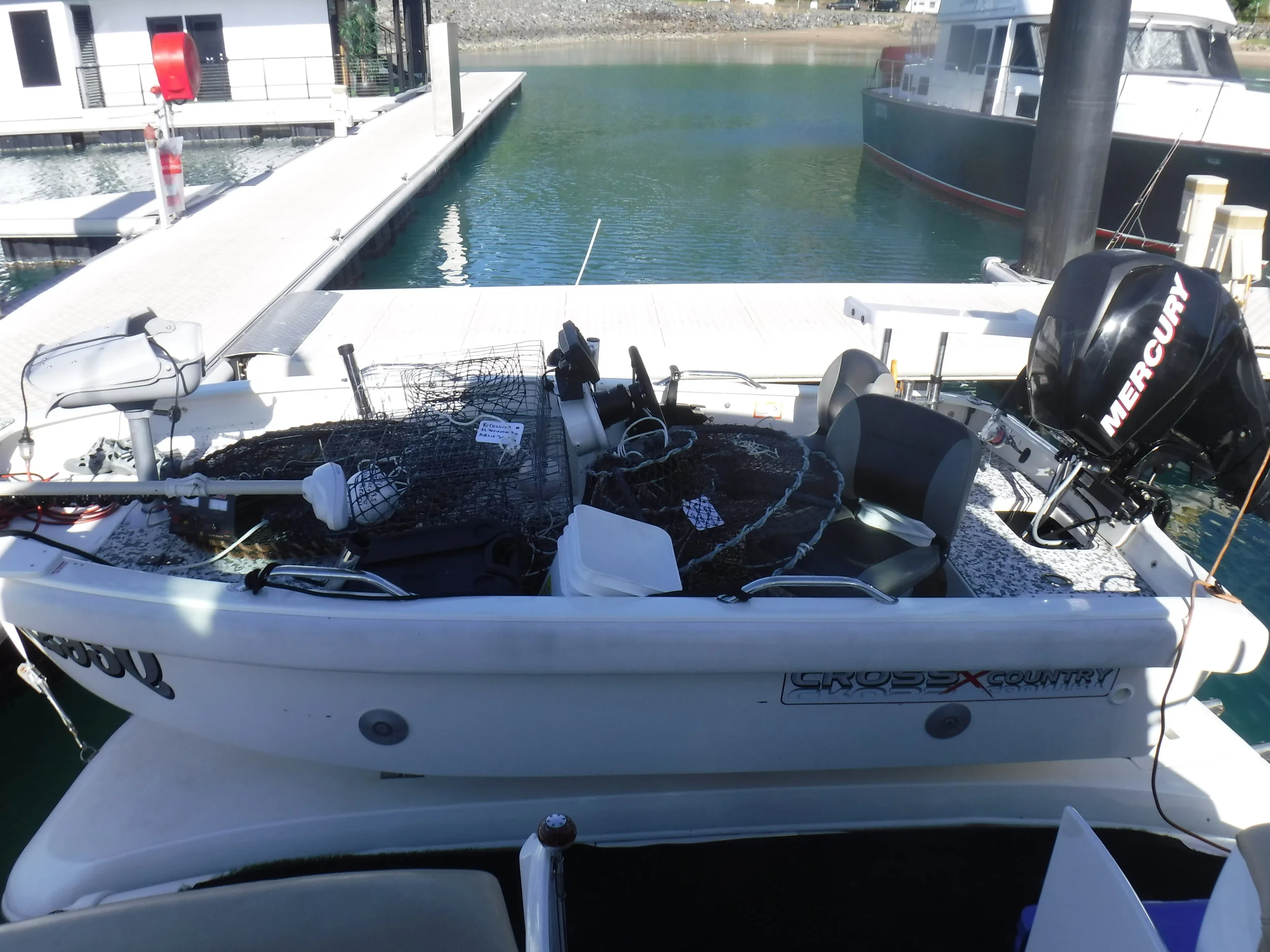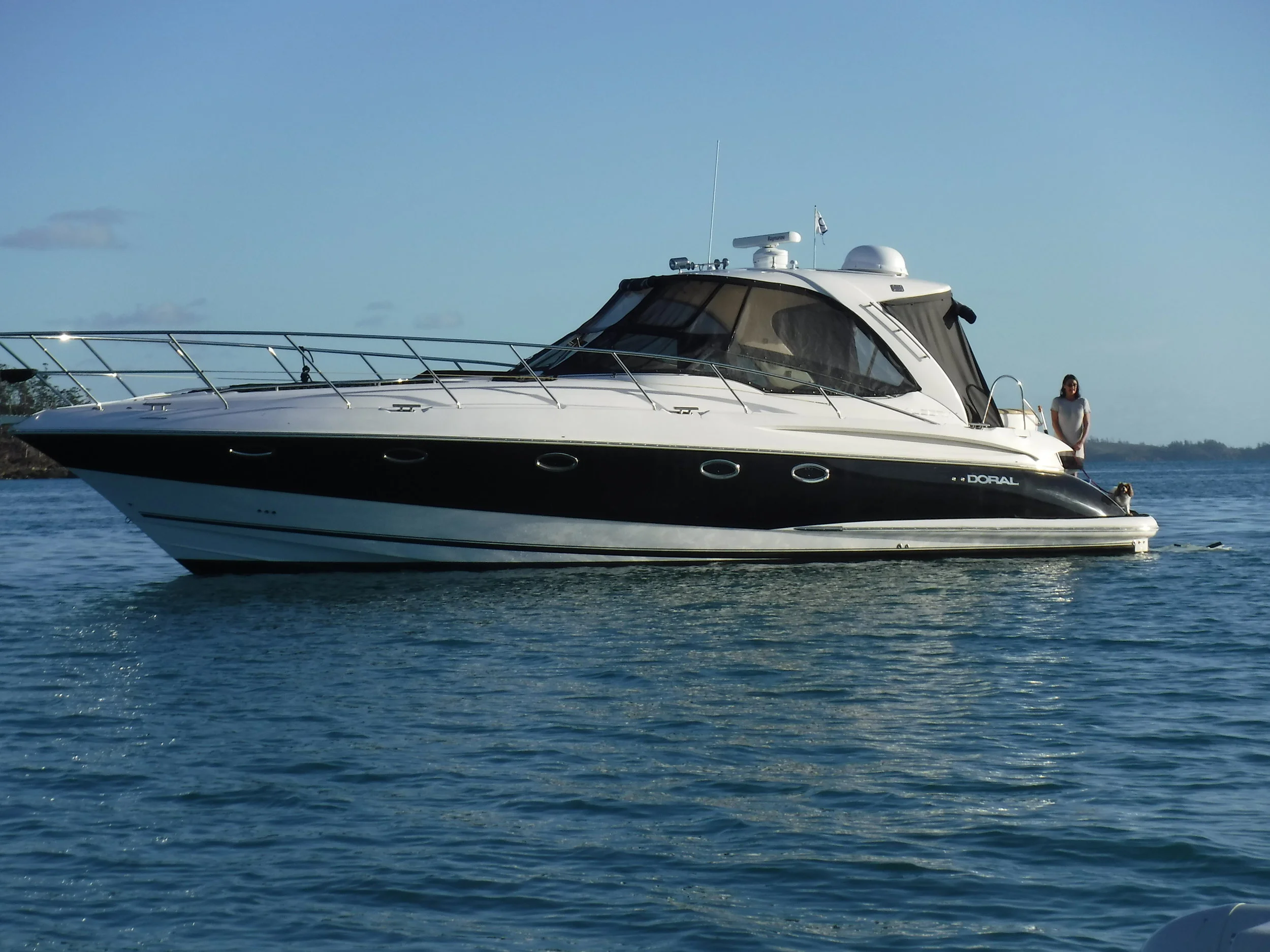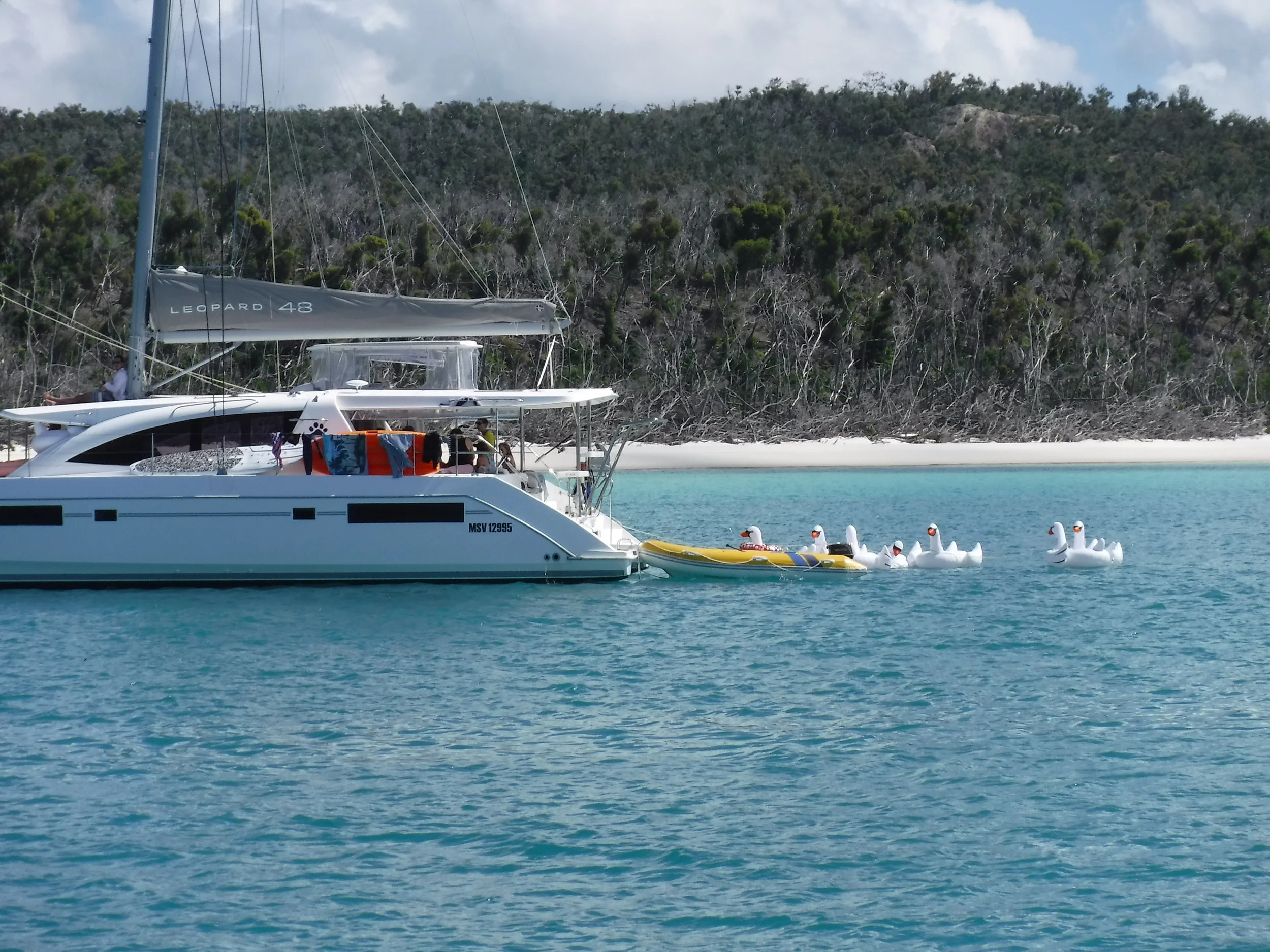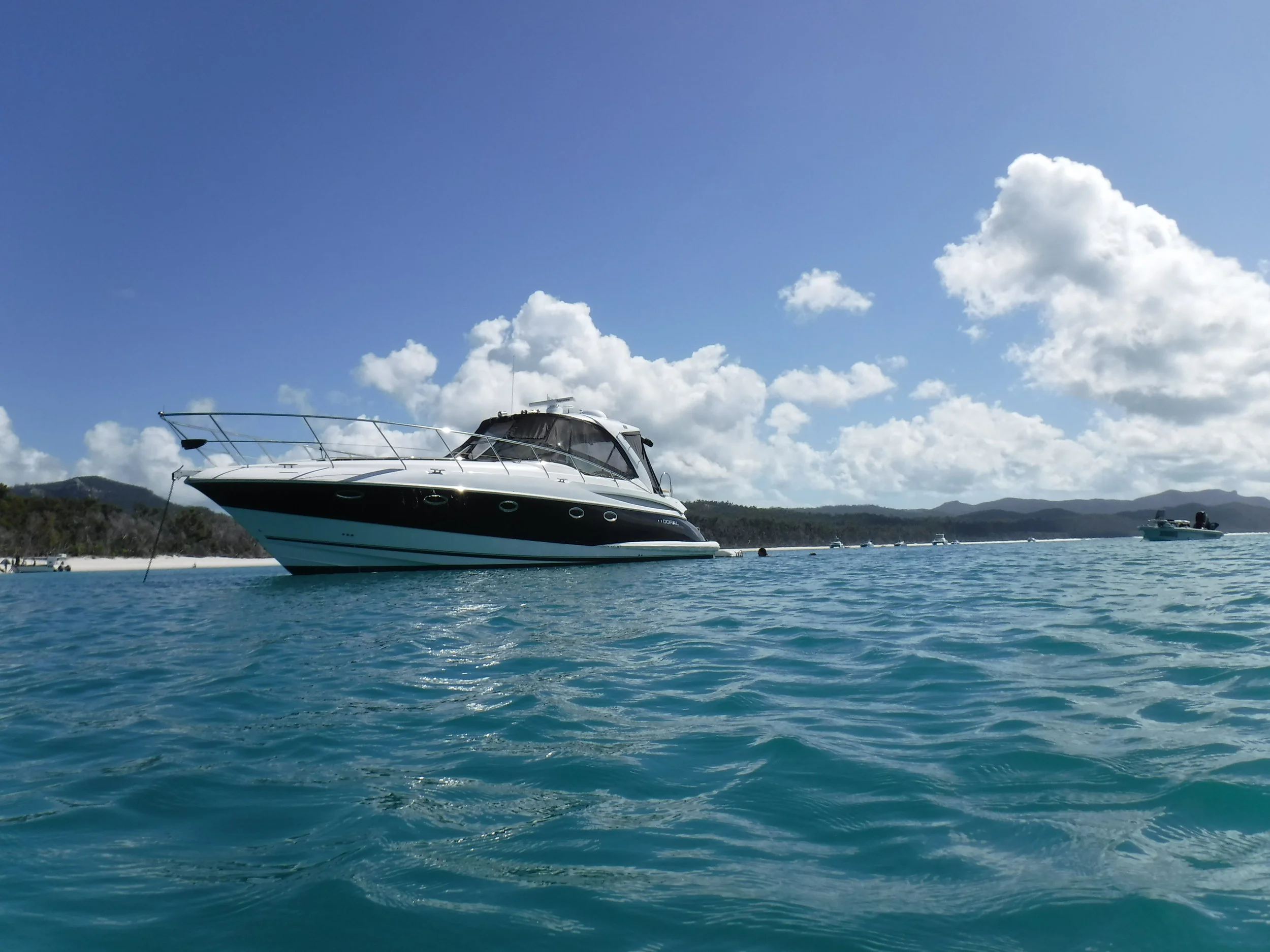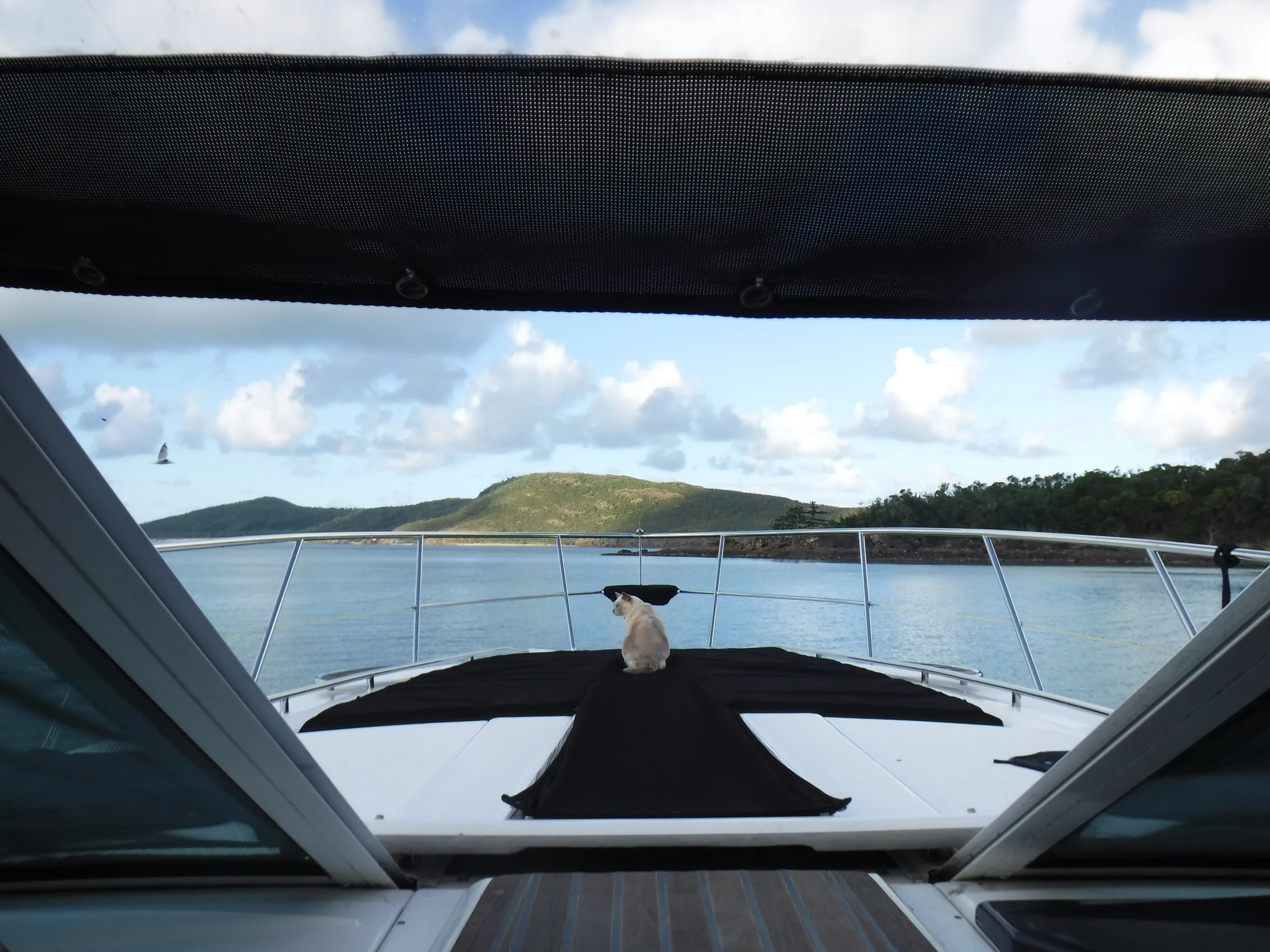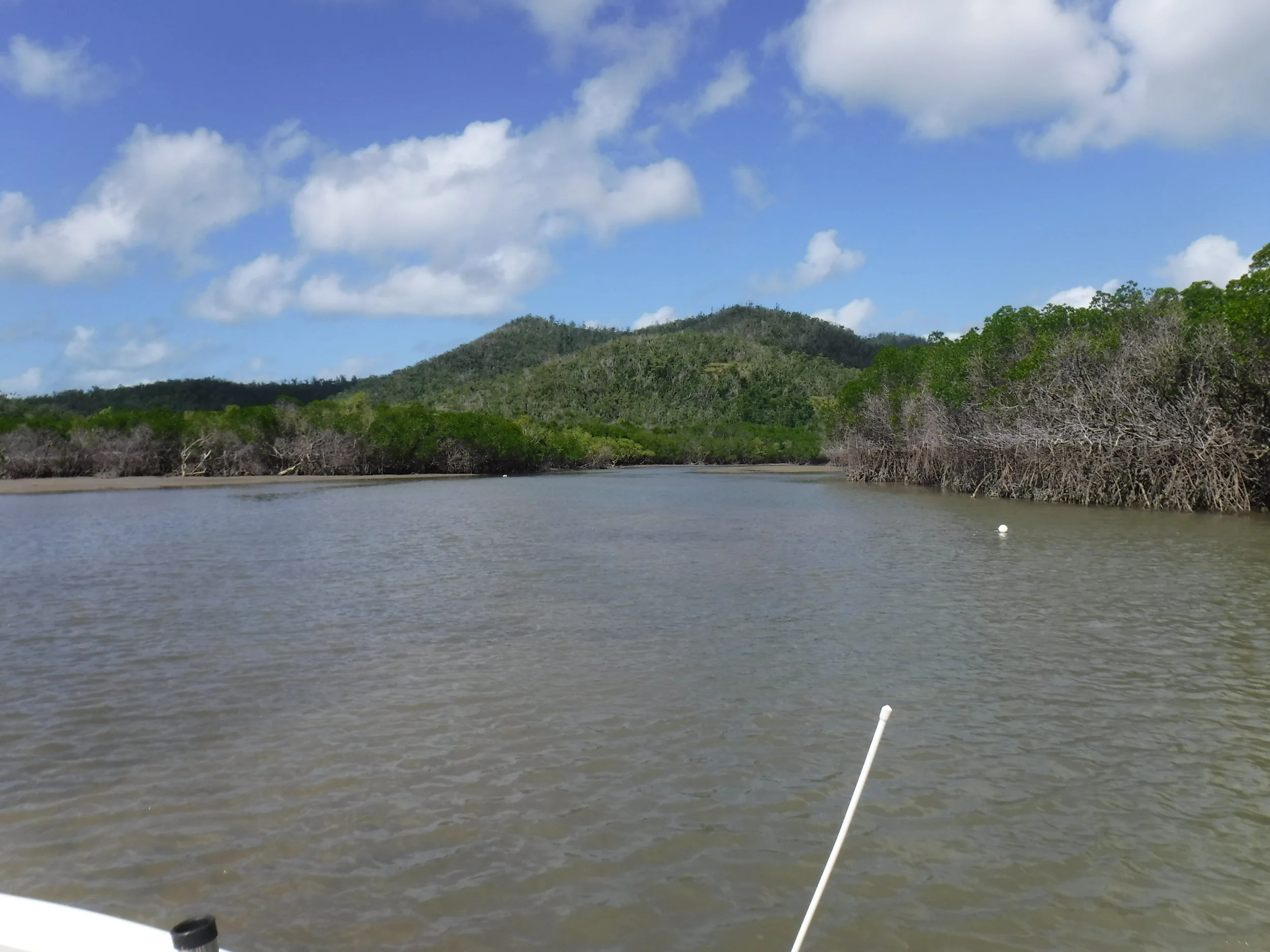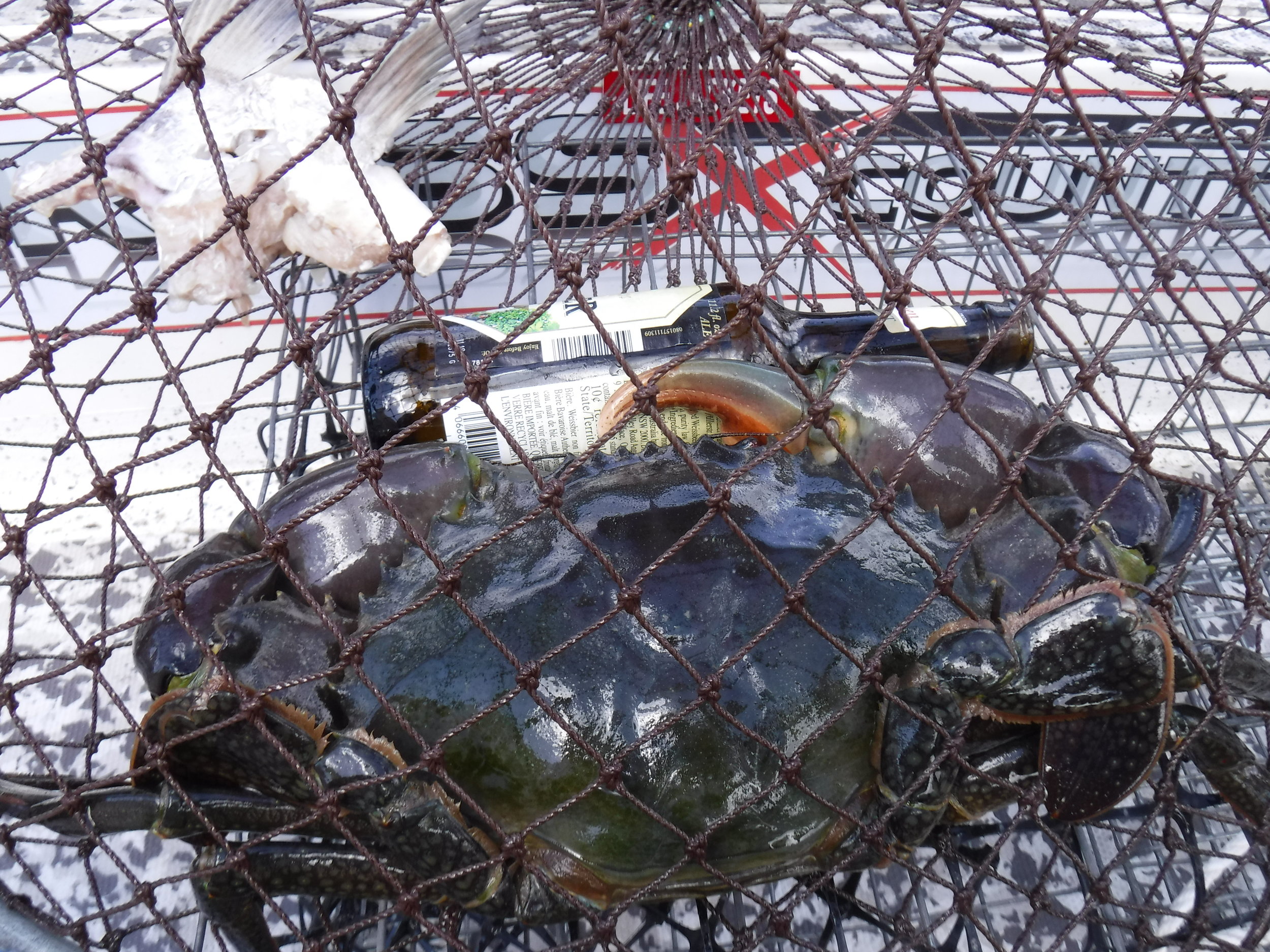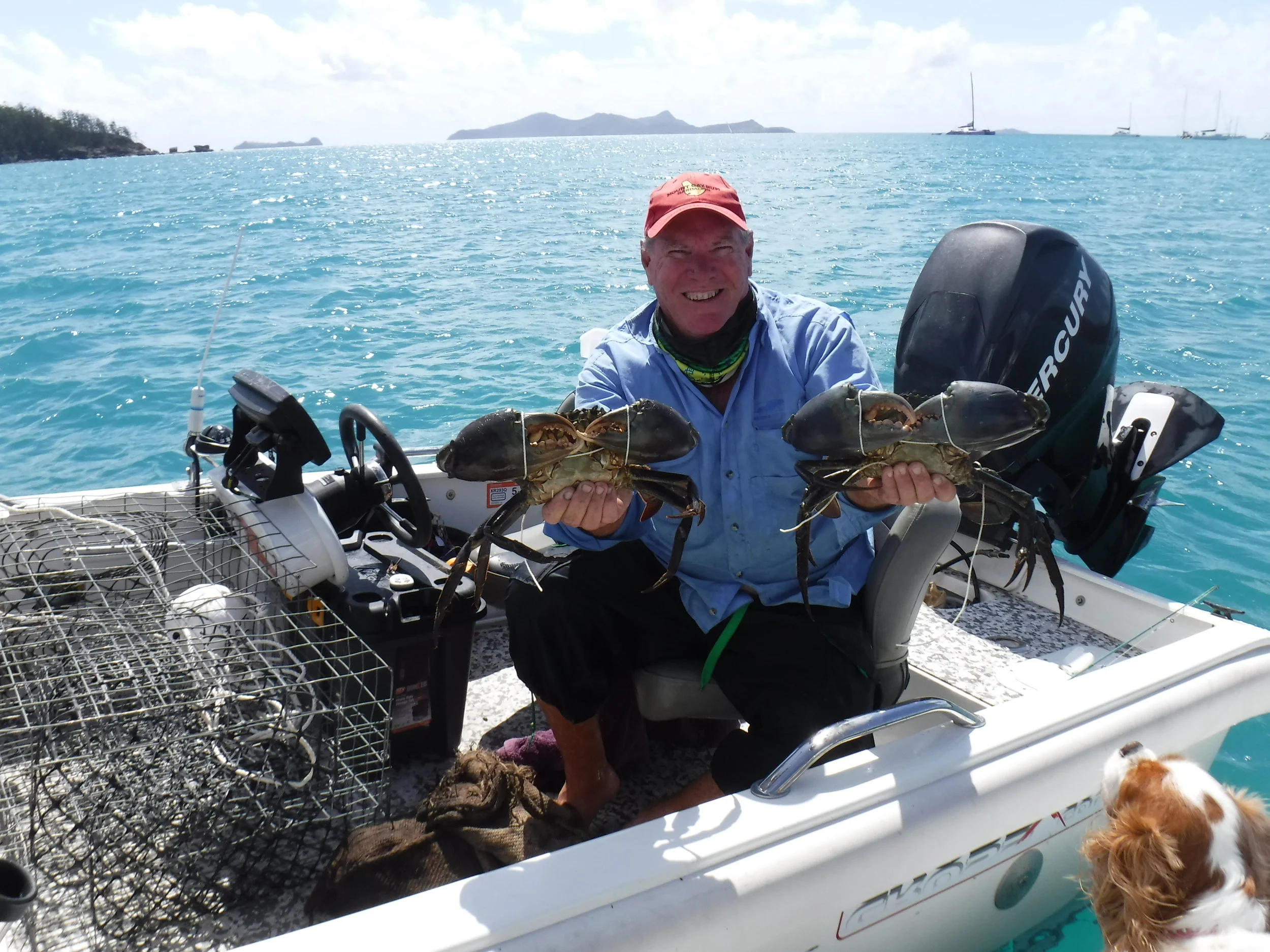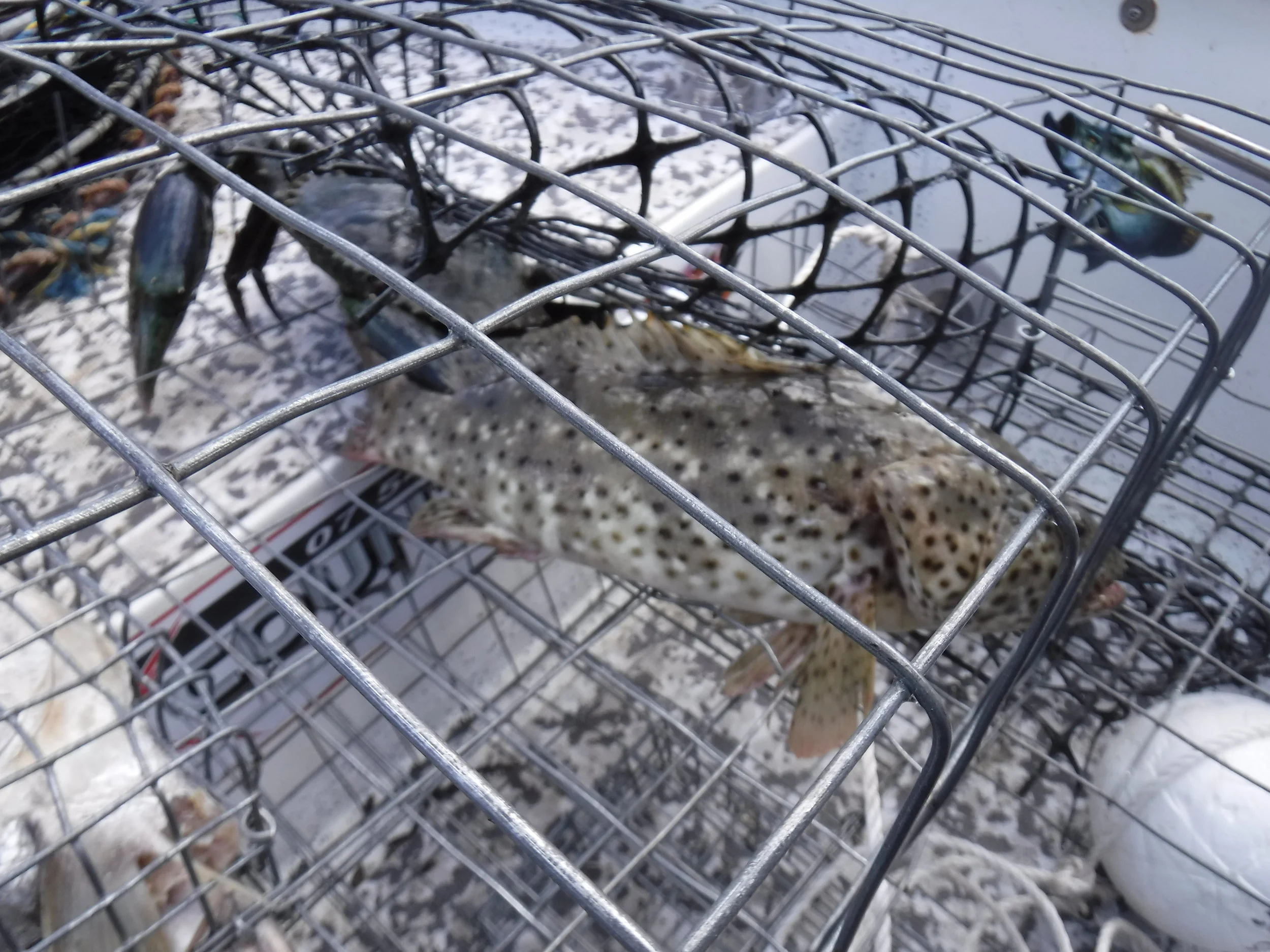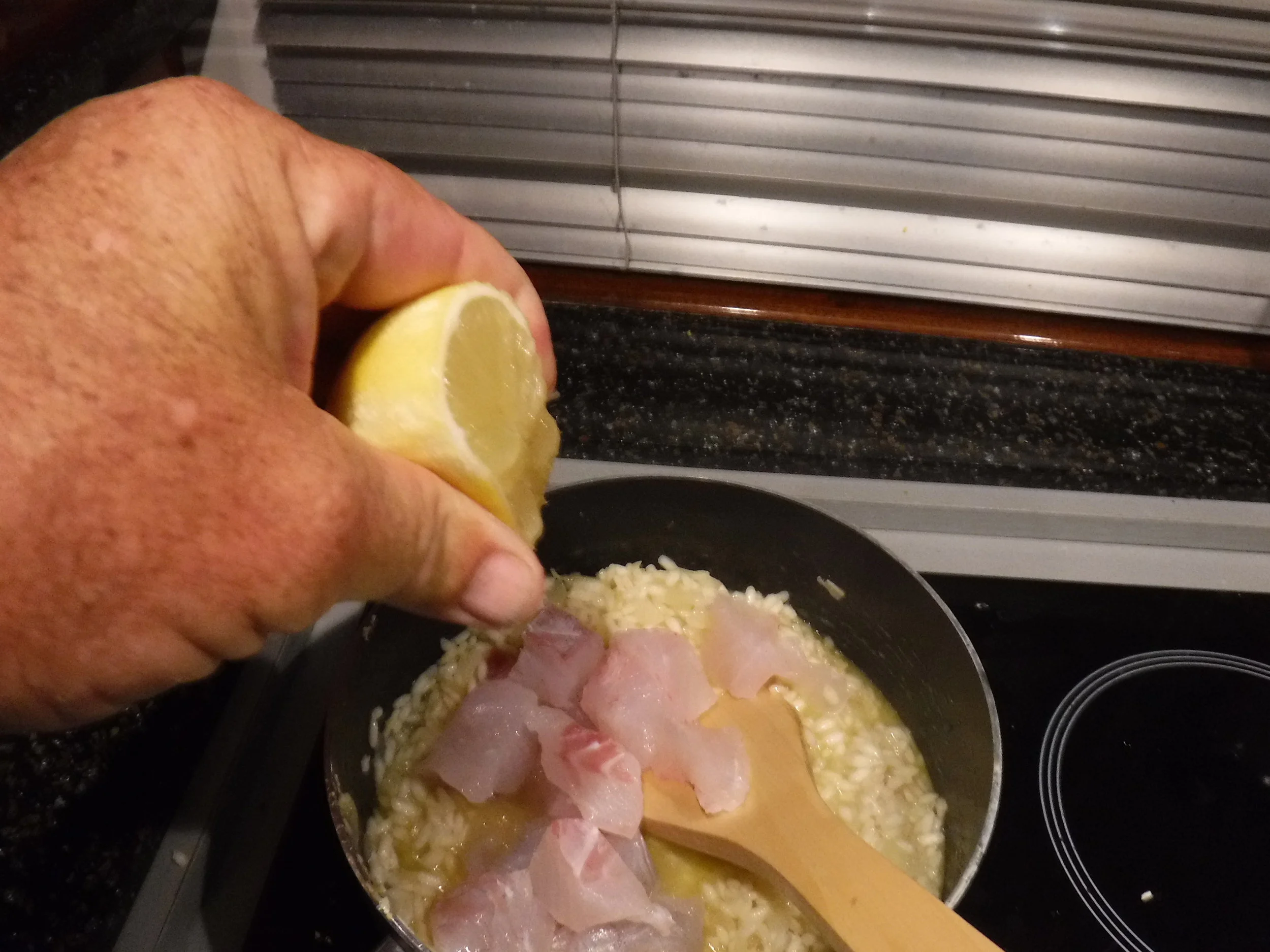Mud Crabs, the islands and my favourite risotto
The Islands of the north Queensland coast often have small creeks and stands of mangroves and despite the accepted principle that mud crabs come from the rivers along the coast, almost every island creek is home to monster mud crabs at certain times of the year. Just after the wet and through until about July, almost any of these island creeks will produce crabs, and what they lack in numbers they certainly make up for in size. It is a bit of a conundrum that your typically need a decent size boat to get out too many of the islands and then a small dinghy to access some of these narrow creeks. It means the perfect balance is a tow behind tender for a live aboard yacht or cruiser. Tides in the Whitsundays are large, with up to 4 meters variation between high and low with many of the creeks mouth drying out or at best being shallow drains at the mouth before typically getting deeper inside the mouth. You need a shallow draft boat and to enter on a rising tide for best results. Pots are best set by accessing the creeks on as low a tide as possible to get a feel for all the drains, drop-offs and ledges. Putting a pot in the mouth of a drain which will become a natural trail for any crabs moving on or off the mud flats with the tide is a sure-fire location and entering on low tide helps find these likely spots. The Island creeks are not usually about big numbers, just really big crabs. The ones in the photos below came out of Tongue Bay but let Google Earth be your friend. Pots in Gulliare or Marcona inlet, Cid harbour or even the creeks in Nara would have been just as productive. Another great bycatch when crabbing these creeks is an almost guaranteed black spot estuary cod. They are great eating and make a sensational fish to use in one of my favourite dishes to cook on board. A fish and mud crab risotto. Pretty simple dish with just a basic chicken stock risotto but adding the zest of a lemon and juice of a lemon right towards the end of the cooking process. Throw in your diced raw fish and allow 2 minutes, stirring occasionally to let the heat in the rice cook the fish just before adding your butter and parmesan. Once this is stirred through fold in your cooked mud crab meat, a handful of halved cherry tomatoes, and then let it rest off heat for 3 minutes. Dinner on a boat does not get much better and if I had to serve this dish in the restaurant, with mud crabs at $30+ per kg it would be one very expensive risotto, yet, a bit of fun on the water and 20 minutes in the galley and this is locavore scavenging at its finest.
